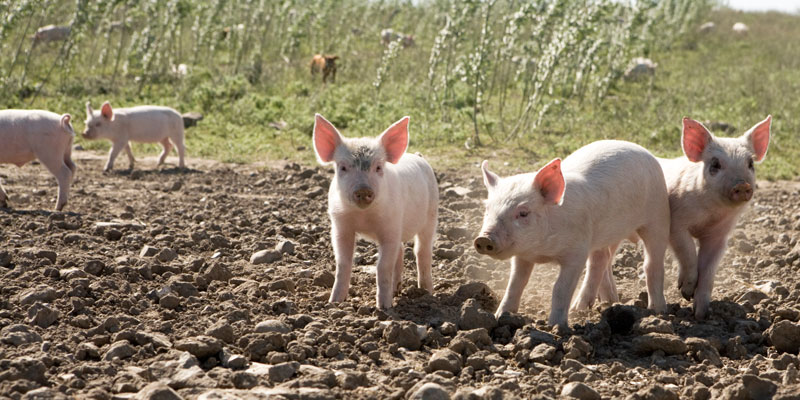Origin, Occurrence and Fate of Nitrate in Sedimentary Bedrock Groundwater in the Maritimes
Principal Investigator - Cathy Ryan, Professor, University of Calgary, 2012 - 2014

Challenge
Contamination of groundwater due to agricultural activities in regions with shallow aquifers poses a major threat to the quality of Canada’s groundwater. In fractured regions, decades of nitrate diffusion into the rock matrix may present a legacy contamination issue that scientists do not understand the implications of, and hence the water users do not fully appreciate. In highly groundwater dependent regions, water users need to understand the extent to which agricultural management can mitigate nitrate loading to the water table without significant economic losses, and the rate at whichexisting well water nitrate concentrations can be expected to decrease once the loading to groundwater decreases.
Despite the risk of contaminated groundwater, there is a lack of applied research on this topic, and thus a lack of basis for regulatory and management decisions. In addition, there is no accepted approach for estimating the fate and transport of groundwater nitrate in shallow aquifers. Groundwater users and regulators, in regions with groundwater nitrate issues, need a scientific and economic framework to aid in decision-making about various treatment and source control options. This project, led by Dr. Cathy Ryan, gives guidance to design groundwater monitoring programs and construct supply wells that maximize production and limit nitrate-rich groundwater capture.
Project objectives include:
i) Improving the quantitative estimation of shallow groundwater nitrate loading under various best management practices
ii) Improving the understanding of flow between the unsaturated and groundwater zones
iii) Understanding the role of matrix-stored nitrate and attenuation mechanisms
Project
The project team will conduct field investigations of fractured rock aquifers using new and innovative approaches to characterize the unsaturated zone, shallow groundwater, and deep groundwater zones in selected Maritime communities. This project will work to better define the relationships between agricultural practices and groundwater quality. Additionally, this project will characterize the groundwater system, including flowpaths and travel times of water and contaminants, such that the existing agricultural impacts are understood and future projections of impact can be evaluated. Estimates of groundwater nitrate loading will be incorporated into conceptual and mathematical models, and will be applied to a broader geographic scale. A field-based assessment of the mass of matrix-stored groundwater nitrate will be conducted to improve the conceptual model of flow and nitrate transport in sedimentary rock aquifers. This will lead to improved field parameterization and mathematical modeling to predict the groundwater nitrate projections in long-term affected areas when reduced loadings are achieved.
An economic analysis will be conducted to estimate the net returns to the individual producer of alternative farming practices that influence groundwater nitrate concentrations. This will involve collecting economic and hydrological data and incorporating the data collected into integrated economic and watershed models using spatial references within a Geographic Information System (GIS) framework. This will be done to examine the tradeoffs of Best Management Practices (BMPs) and prioritize locations for BMPs implementation to achieve groundwater protection goals at minimum economic costs. The economic ‘trade-off’ analysis will be extended from the individual farm level to a regional/aquifer-wide scale.
Outputs
Anticipated outputs include:
- Five guidance documents that will provide direction on:
- Drilling and instrumentation of effective groundwater monitoring wells to collect hydrogeological information in fractured bedrock;
- Drilling groundwater supply wells that minimize fractured rock cross-connections (to reduce pathways for access) and nitrate-rich zones;
- Design of appropriate groundwater quality monitoring programs to evaluate impacts of land use changes;
- Effective approaches to evaluate relative groundwater nitrate loading under different BMPs for all aspects of the agricultural industry; and,
- A robust conceptual model for the evaluation of well-head protection zones and long-term projections.
- An economic analysis of Best Management Practices as a function of water quality changes.
- Evaluation and comparison of innovative policy options (e.g. reverse auction system, abatement action permit system) with standard policies in terms of cost-efficiency, environmental efficiency, and equity.
To disseminate findings and plan research, partners have met with researchers on a regular basis:
- Research meetings were held at University of Prince Edward Island in May 2013.
- A field trip to the Souris Research Site was led by the Agriculture and Agri-Food Canada partner, Dr. Yefang Zhang, with about 15 participants in May 2013.
- Hydrogeological tour of the Annapolis Valley (the fractured sandstone aquifer region with regionally intense agricultural use and associated groundwater nitrate issues) will be led with an anticipated 35 participants.
Outcomes
Anticipated Outcomes Include:
- Changes in practice related to the production of guidance documents on how to design and instrument groundwater monitoring wells, water wells for domestic or industrial use, and considerations for groundwater investigation methods and improved monitoring network design in fractured sedimentary rocks.
- Informed decision-making related to the economic analysis of BMP’s and the results of the comparison of innovative policy options.
- Increased knowledge related to groundwater monitoring programs.




